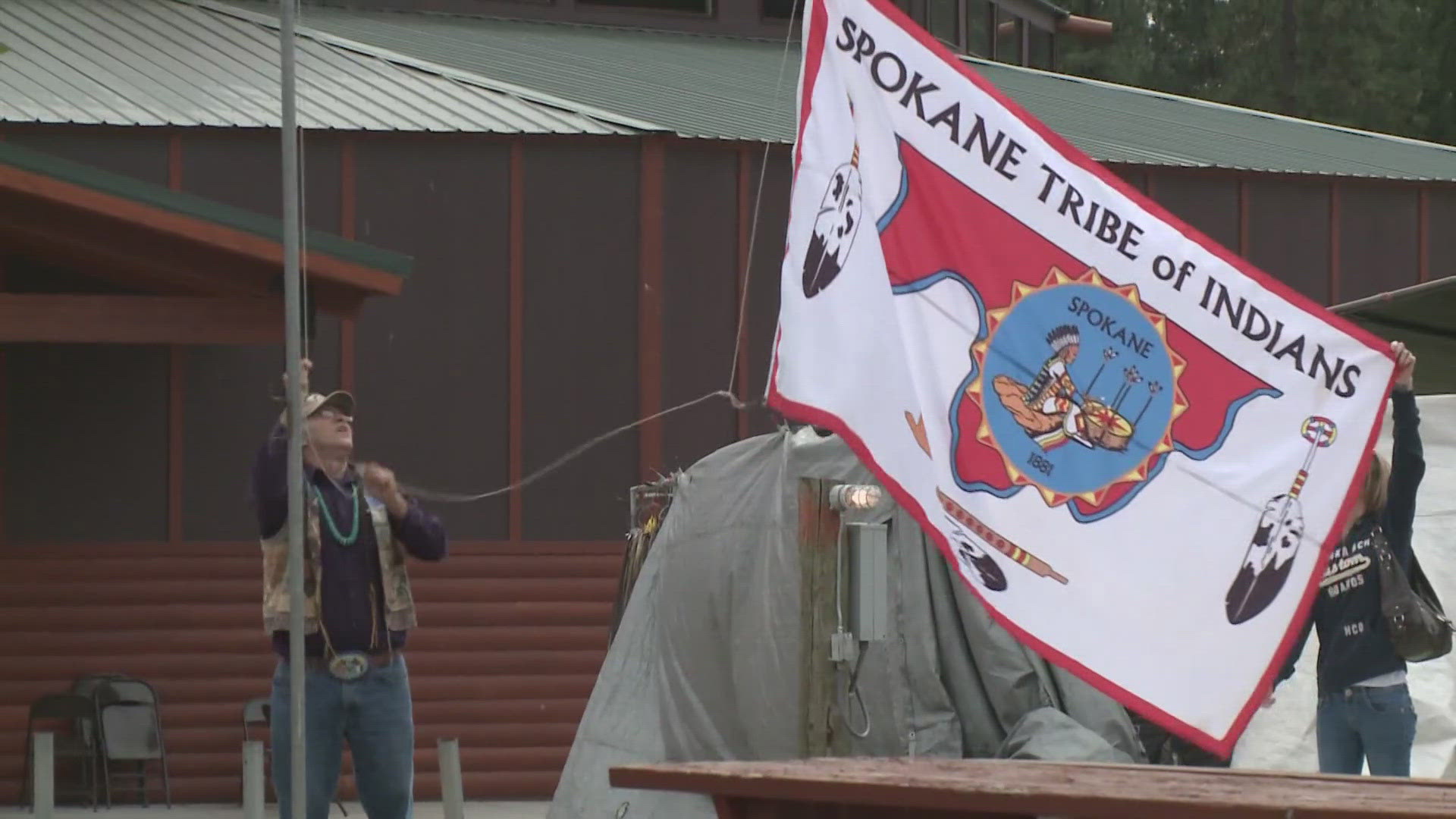SPOKANE, Wash. — In 1974, thousands of people came to Spokane for the World’s Fair to celebrate the theme of “Tomorrow’s Fresh New Environment.”
Exhibits showcased the importance of taking care of the land around us, but ironically, the people who originally lived on this very land, the Spokane Tribe, had to fight to be included.
Margo Hill, the Director of American Indian Studies at Eastern Washington University and Spokane Tribe member, says she remembers the expo very well.
“My great-grandmother told the story of how the Spokane Tribe came to live in the city of Spokane,” said Hill.
Margo was six when she attended Expo ’74 with her family. Her great grandmother, Sadie Boyd, was a huge part of the Native Village exhibit, sharing the tribe’s history with visitors.
“My great grandmother, Sadie Boyd, lived to be 103,” said Hill. “But at Expo, she was 90. And she spoke and she told the history of the Spokane area from 1910.”
The Native Village was a collective effort by the Spokane, Coeur d’Alene, and Kalispel tribes to showcase the majesty and uniqueness of all the regional tribes.
“At the “Native Village, we tried to represent all the different tribal cultures,” said Hill. So their ethnography, we classify, there's Plains American Indian, there's plateau, we're interior Salish, plateau, and coastal. And so we wanted to represent all the tribal cultures. And so, we had teepees that are more plains, and you know, we had a coastal longhouses.”
Hill says the Native Village was one of the most visited exhibitions at Expo ’74, but it almost wasn’t included in the event, and neither were the tribes.
“We had to fight to have participation,” said Hill. “You know, we were part of the Folklife Festival and out of 100 acres, you know, we had to fight like heck. So our tribal leaders, we knew how to organize. And so, we talked to the local local folks, and people, people really weren't listening. You know, King Cole, later was quoted as saying, we always wanted the tribes to participate, but we really didn't know how to go about it.”
King Cole was one of the major driving forces behind bringing the World’s Fair to Spokane in 1974.
The tribe’s leaders tried to appeal to local leaders as to why they should be included in the exhibitions, but their complaints fell on deaf ears. So they took their demands all the way to Washington D.C.
“Our tribal leaders were, in fact, in Washington DC. and, you know, we talked to [former United States Senator Warren] Magnuson and Scoop Jackson.
The pressure from D.C. worked and finally the tribes were given the green light to be exhibitors, on their own land.
“As indigenous people, we live with the environment and with the salmon, and that was our livelihood,” said Margo. “And so, here we have the city saying, you know, environmental focused, and a fresh new look, and all those kinds of things. And the tribes had been living with nature since time immemorial. And so. you know, we finally got two acres of the 100 acre pavilion.”
Now, for the 50th anniversary of Expo ’74, there are several events being held to honor our regional tribes, including a Pow Wow at the Spokane Convention Center on Saturday May 25th and Sunday May 26th. For more information on the Pow Wow and all of the Tribal Pillar events, you can click here.
WATCH RELATED: Spokane Tribe working to keep Salish language alive

